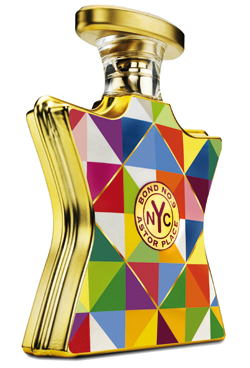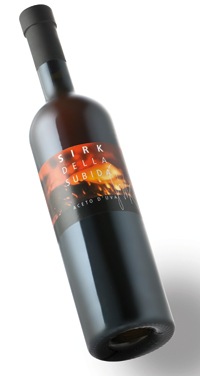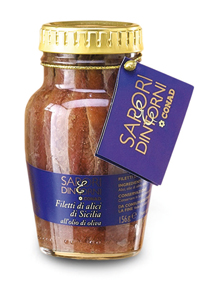Glass packaging – Data 2011
FACTS AND FIGURES According to an initial balance on activity for the year 2011 the Italian glass packaging production sector has put in a good showing: export figures, linked to the performance of certain foodstuffs, are encouraging, but the Italian domestic market also put in a good performance.
 Glass is one of the oldest materials on earth. Initially only used in high-end products (precious perfumes, fine glassware, stills...) in time it has become a key raw material for packaging products on a large scale: since 1600 French Champagne has been exclusively bottled in glass; at the beginning of 19th century Nicolas Appert carried out the first experiments on storing food in steel and glass containers...
Glass is one of the oldest materials on earth. Initially only used in high-end products (precious perfumes, fine glassware, stills...) in time it has become a key raw material for packaging products on a large scale: since 1600 French Champagne has been exclusively bottled in glass; at the beginning of 19th century Nicolas Appert carried out the first experiments on storing food in steel and glass containers...
Over the years bottles, flacons and jars in general have been subjected to numerous innovations, both in terms of shape and in terms of downgauging - reduction in weight/thickness while offering the same resistance, with beneficial effects also from the environmental point of view (the recyclability of glass being one of its fundamental features): In fact, thanks to modern production and design techniques, the average weight of bottles and jars has now been reduced substantially by about 10% to 30%.
Sector figures
After the significant decline in production of 9.2% in 2009, in 2010 the production of glass packaging rebounded by +5%.
According to an initial balance for 2011, the segment has put in an additional recovery of approximately 1%, despite a progressively deteriorating global economic situation starting last autumn.
The year 2011 also featured an increase of about 3% of exports, a substantial confirmation of the quantity imported and apparent consumption rising by around 1%.
The growth, albeit limited, in domestic demand, is mainly due to the excellent growth in wine, beer and alcoholic beverage exports in general. The production of glass packaging, expressed in terms of weight, accounts for 23% of global packaging production.
Italian glass packaging production is comprised 88% by bottles, 7% by jars for food and the remaining 5% by flacons and glass tubes for vials and ampoules.
Bottles
Glass bottle production in Italy in 2011 is estimated to have reached 3,150 t/000, hence putting in a  +1% compared to 2010. The growth is essentially due to the good performance of the wines and spirits sectors.
+1% compared to 2010. The growth is essentially due to the good performance of the wines and spirits sectors.
Main outlet sectors. A series of liquid food segments use newly produced and marketed hollow glass bottles (percentages are in terms of weight).
The biggest user is the alcoholic beverage industry with a share of 70.5%, of which wine accounts for around 51%.
This is followed by beer (14%) while the remaining 5.5% is split between spirits and vermouth.
Another important outlet area for bottles is soft drinks, whose share of the market is around 15% (still in terms of weight).
Mineral water remains a top segment, with a share of 10%. Here the position of glass has been consolidated in recent years thanks to numerous innovations in the personalization of bottles.
Fruit juices absorb 3% of glass bottle production (comprised 90% of single doses), showing a progressive decline. The remaining 2% is used for other soft drinks (non carbonated fancy drinks, soft drinks and sports drinks).
Other important areas of use of glass bottles: olive oil (estimated 5.5% share, down slightly compared to 2010 following a growth of PET containers and metal for export), which identifies it as a container for high-end products; followed by vinegar, cordials, tomato puree, seed oil, liquid home detergents…
 Jars
Jars
It is estimated that the 2011 production of glass jars reached 250t/000, up 7% compared to 2010.
The outlet sectors. Sauces, various vegetable preserves, vinegar and oil pickles, babyfood, jams, anchovies, yogurt, mayonnaise and chocolate spreads: these the main outlet sectors.
Around 51% of jars (figures in terms of weight) are used for packaging vegetable preserves, legumes, vinegar and oil pickles, jams, sauces etc..: while used extensively, glass must still compete with alternative packaging such as flexible pouches and polylaminate cellulose containers. In the babyfood area the use of glass jars is clearly prominent (28.5%) and showing an upward trend. 6% are for ichthyic products: the glass solution has good potential for growth in the tuna fillets segment.
The remaining 14% is divided among several food areas, among which chocolate spreads and mayonnaise.
The glass jar is normally closed with a steel twist-off lid.
In this sector in some cases an increase in the use of the plastic jar with screw cap (this too in plastic) or with a peelable aluminium tops is deemed possible.

Flacons (hollow and tubular glass). 180 t/000, +2% on 2010: these the estimated figures for 2011. The growth trend over last two years comes from the good performance of perfumery-cosmetics and pharmaceuticals.
Plinio Iascone
Istituto Italiano Imballaggio



















